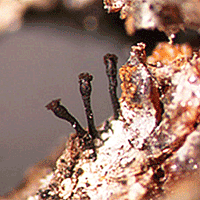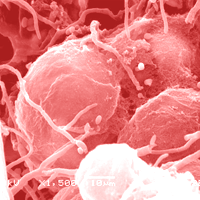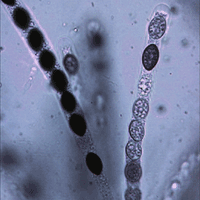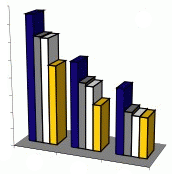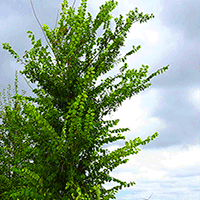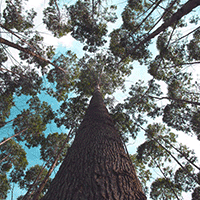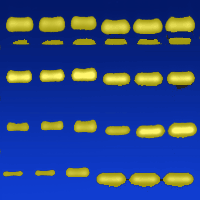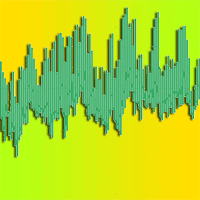
Seasonal dynamics of Cryptostroma corticale conidial spread
Milon Dvorák (1) , Katerina Janovská (1), Michael Rost (2)
iForest - Biogeosciences and Forestry, Volume 18, Issue 2, Pages 79-86 (2025)
doi: https://doi.org/10.3832/ifor4676-018
Published: Apr 17, 2025 - Copyright © 2025 SISEF
Research Articles
Abstract
Cryptostroma corticale, the causal agent of sooty bark disease (SBD) in maples, is a typical tree pathogen that emerged as a result of climate change. In Central Europe, it primarily affects sycamore maple, with airborne conidia infecting fresh bark wounds, allowing the fungus to penetrate the wood. C. corticale may survive in an endophytic phase until the tree is stressed by drought and/or long periods of above-average temperatures. After such periods, it begins to develop stromata under the bark. When the covering layer of bark is peeled off, infective airborne conidia are spread over distances of up to hundreds of kilometers. Apart from infecting trees, these conidia can also cause hypersensitive pneumonitis in humans. To describe the seasonal spore dispersal pattern of C. corticale, an automatic volumetric spore trap was installed from March to November 2022 in an SBD-affected locality close to Brno, Czech Republic. Samples were analyzed by qPCR, and a logistic regression model was fitted to express the spore occurrence probability based on meteorological variables. The model revealed a positive effect of wind speed on spore abundance and a negative impact of temperature and surface moisture. The highest abundance of spores was recorded in spring. Negligible numbers of conidia were observed during the summer, followed by a slight increase in the early autumn and a subsequent drop after the end of October. Practitioners are advised to avoid any bark or wood damage during windy and dry weather throughout the growing season. Arboriculture care should be planned for winter or windless, hot, and wetter days throughout the growing season when spore concentrations are lowest, thereby reducing the risk of spreading the disease and provoking allergic reactions in humans.
Keywords
Sycamore Maple, Spore Trap, Air Sampling, qPCR, Molecular Detection, Sooty Bark Disease, SBD
Authors’ Info
Authors’ address
Katerina Janovská
Department of Forest Protection and Wildlife Management, Faculty of Forestry and Wood Technology, Mendel University in Brno, Zemedelská 3, 613 00 Brno (Czech Republic)
Department of Genetics and Agricultural Biotechnologies, Faculty of Agriculture and Technology, University of South Bohemia, Studentská 1668, 370 05 Ceské Budejovice (Czech Republic)
Corresponding author
Paper Info
Citation
Dvorák M, Janovská K, Rost M (2025). Seasonal dynamics of Cryptostroma corticale conidial spread. iForest 18: 79-86. - doi: 10.3832/ifor4676-018
Academic Editor
Alberto Santini
Paper history
Received: Jun 27, 2024
Accepted: Feb 03, 2025
First online: Apr 17, 2025
Publication Date: Apr 30, 2025
Publication Time: 2.43 months
Copyright Information
© SISEF - The Italian Society of Silviculture and Forest Ecology 2025
Open Access
This article is distributed under the terms of the Creative Commons Attribution-Non Commercial 4.0 International (https://creativecommons.org/licenses/by-nc/4.0/), which permits unrestricted use, distribution, and reproduction in any medium, provided you give appropriate credit to the original author(s) and the source, provide a link to the Creative Commons license, and indicate if changes were made.
Web Metrics
Breakdown by View Type
Article Usage
Total Article Views: 4574
(from publication date up to now)
Breakdown by View Type
HTML Page Views: 1402
Abstract Page Views: 1338
PDF Downloads: 1657
Citation/Reference Downloads: 0
XML Downloads: 177
Web Metrics
Days since publication: 248
Overall contacts: 4574
Avg. contacts per week: 129.10
Citation Metrics
Article Citations
Article citations are based on data periodically collected from the Clarivate Web of Science web site
(last update: Mar 2025)
(No citations were found up to date. Please come back later)
Publication Metrics
by Dimensions ©
Articles citing this article
List of the papers citing this article based on CrossRef Cited-by.
References
The morphology and physiology of Cryptostroma corticale. PhD thesis, Department of Chemistry, Loughborough University of Technology, Loghborough, UK, pp. 228.
Gscholar
Some environmental factors affecting Cryptostroma corticale. Microbios 44: 157-167.
Gscholar
Le point sur: la maladie de la suie [News about: the sooty bark disease]. Bulletin de Santé Du Végétal Midi-Pyrénées 4: 1. [in French]
Gscholar
Bemerkenswerte Krankheiten in 2004 [Remarkable diseases in 2004]. Forstschutz Aktuell 32: 31-34. [in German]
Gscholar
Biology of Cryptostroma corticale and the sooty bark disease of sycamore. PhD thesis, Department of Botany, University of London, Berkshire, UK, pp. 198.
Gscholar
Forstschutzsituation 2003 in der Schweiz [Forest protection situation 2003 in Switzerland]. AFZ - Der Wald 59: 385-387. [in German]
Gscholar
Generalized linear models. In: “Statistical models in S” (Chambers JM, Hastie TJ eds). Wadsworth and Brooks/Cole, Pacific Grove, CA, USA, pp. 195-248.
Gscholar
Problémy ochrany lesa v roku 2017 a prognóza na rok 2018 [Problems of forest protection in 2017 and prognosis for 2018]. In: “Aktuálne problémy v ochrane lesa 2018” [Current Problems in Forest Protection 2018] (Kunca A ed). Národné lesnícke centrum, Zvolen, Slovakia, pp. 17-21. [in Slovak]
Gscholar
Cryptostroma corticale an Bergahorn nach dem Trockenjahr 2003. [Cryptostroma corticale on sycamores in Germany after the drought period of 2003]. Mitteilungen aus den Biologischen Bundesanstalt für Land- und Forstwirtschaft, Berlin-Dahlem 400: 161-162. [in German]
Gscholar
La suie des sycamores à Paris [The soot of the sycamores in Paris]. Bulletin de La Societé Mycologique de France 67: 404-418. [in French]
Gscholar
Conditions of emergence of the sooty bark disease and aerobiology of Cryptostroma corticale in Europe. Neobiota 84: 319-347.
CrossRef | Gscholar
Ein Fall von asthmaartiger Allergie, verursacht durch den Pilz Cryptostroma corticale [A case of asthma-like allergy caused by the fungus Cryptostroma corticale]. Pflanzenschutzamt Berlin, Germany, pp. 100-101. [in German]
Gscholar
The biology of Cryptostroma corticale and the sooty bark disease. Report on forest research for the year ending March, 1953. Forestry Commission, London, UK, pp. 118-120.
Gscholar
Biology of Leptosphaeria maculans ascospore release in England and Poland. IOBC Bulletin 25: 21-29.
Gscholar

